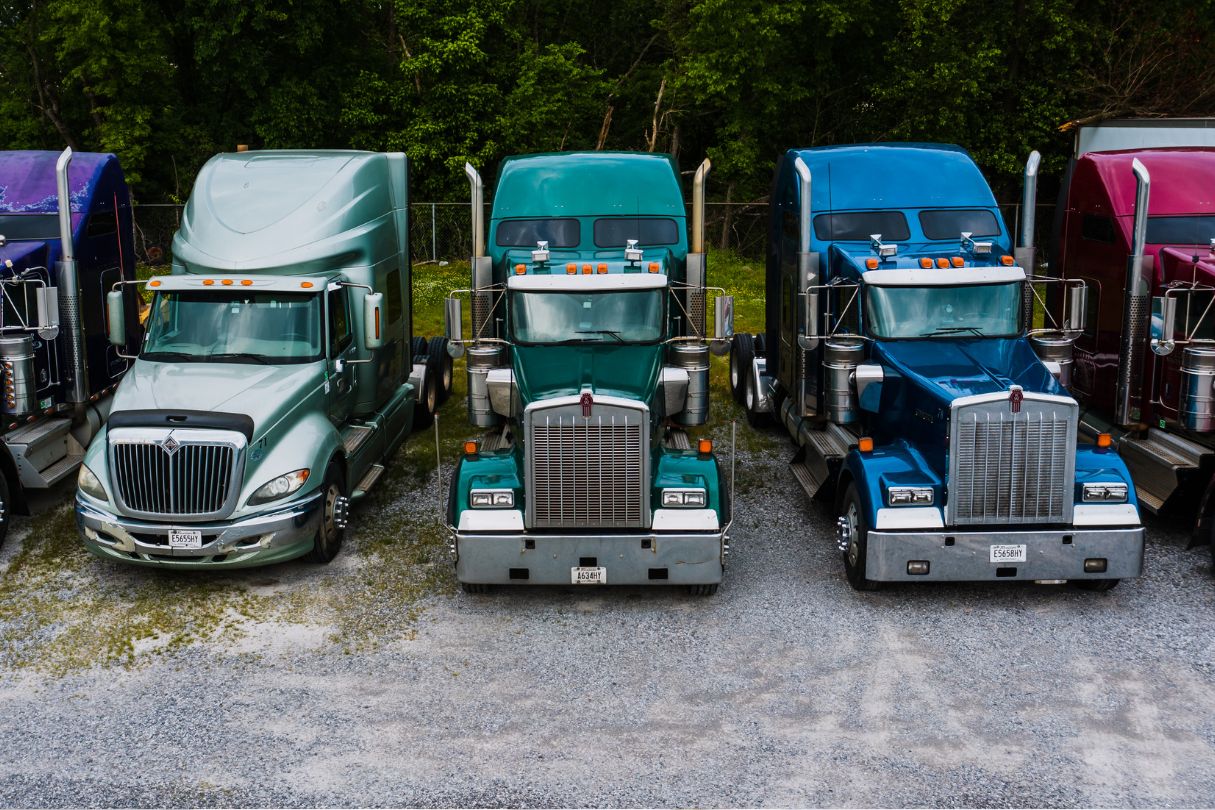The National Highway Traffic Safety Administration (NHTSA) of the US Department of Transportation has unveiled ground-breaking new fuel efficiency criteria for the 2027–2031 model years. These regulations—which carry over from earlier initiatives in the 1970s—offer significant savings for Americans in addition to significant decreases in pollution and improved energy security. The program demonstrates the government’s continued commitment to lowering the nation’s transportation sector’s total environmental effect in addition to raising the average fuel economy of American cars.
This deliberate drive for stricter fuel economy regulations is intended to be a major step in the fight against climate change and to solve fuel-related economic issues. The NHTSA hopes to inspire the car sector to innovate and embrace more energy-efficient technology by establishing these aggressive goals. These adjustments are anticipated to have a significant impact on American driving habits and car preferences, pushing the industry toward more environmentally friendly solutions that support both domestic and international economic objectives.

The United States has undergone a significant and protracted transition towards more fuel-efficient automobiles, mostly because to the leadership of the National Highway Traffic Safety Administration (NHTSA). When the typical car only got 13 miles per gallon in the 1970s, the NHTSA was leading the charge in promoting and enforcing laws meant to improve fuel economy. This constant pressure has produced a string of small but significant advancements, with each new set of rules building on the one before it to establish ever-higher goals. By consistently setting higher standards, the NHTSA has not only encouraged innovation in the automotive sector but has also made a substantial contribution to environmental preservation and cost savings for car owners.
Several significant advancements over the years demonstrate how these criteria have changed:
Initial Legislation: In response to the 1973 oil embargo, the Corporate Average Fuel efficiency (CAFE) regulations were originally implemented with the goal of doubling the average fuel efficiency of the country’s automobiles by 1985.
- This legislative measure forced manufacturers to create and use more fuel-efficient technology, marking a significant turning point in the vehicle manufacturing industry.
Technological Innovations: Significant improvements in engine design, aerodynamics, and materials during the 1980s and 1990s contributed to increased fuel economy.
- The increasing desire among consumers for more fuel-efficient cars in the face of volatile fuel costs propelled these technological changes in addition to regulatory requirements.
Modern Enhancements: More recently, the average fuel efficiency has reached previously unheard-of heights because to the standard-setting integration of electric and hybrid technology.
- The market has been completely transformed by hybrid and electric cars, which provide substitutes that drastically cut or even completely remove the need for petroleum, increasing the average fuel efficiency.
All these stages show a larger dedication to sustainability and financial viability, highlighting the critical role the NHTSA plays in creating a more fuel-efficient future. The nation’s reliance on fossil fuels has decreased, and emissions of dangerous pollutants have decreased as a result of the ongoing standards climb, which has also resulted in lower fuel prices for consumers.

The U.S. Department of Transportation recently unveiled regulations that set forth a comprehensive plan to gradually improve fuel efficiency across a range of vehicle classifications. The target for passenger automobiles is to boost fuel efficiency by 2% year between 2027 and 2031. By 2031, this steady improvement is expected to increase average fuel efficiency to almost 50.4 mpg, which would be a major step toward sustainability and energy efficiency in personal transportation. Light vehicles will also follow this pattern, but starting a little later in 2029 and going until 2031. These advances have significant ramifications since they indicate lower pollutants and economic savings for customers in addition to reduced fuel use.
The requirements are much greater for heavy-duty vehicles and vans:
- Annual Increase for Heavy-Duty Vehicles: Between 2030 and 2032, heavy-duty vehicles and vans’ fuel efficiency will rise by a strong 10% annually. This aggressive aim is intended to close the gap and eventually bring these heavier cars into line with their more fuel-efficient rivals.
- Sustained Gains Post-Initial Spike: After the first three years of sharp rises, the rate of enhancement will level out between 2033 and 2035 at 8% annually. This ongoing development will guarantee that heavy-duty trucks keep become more fuel-efficient, reducing long-term operating costs and their negative environmental effects.
These challenging goals are a part of a larger government initiative to improve the nation’s car fleet’s overall energy efficiency, lessen reliance on fossil fuels, and support environmental sustainability. By implementing the change gradually, producers are given enough time to adjust and develop, making the shift both feasible and profitable.

In addition to guaranteeing better air in the future, the USDOT’s new fuel efficiency regulations also portend major financial gains for owners of American automobiles. According to economic projections, these laws might save car owners up to $600 in gasoline over the course of their vehicles’ lifetime, which could make a big difference in household finances. The overall effect on gasoline consumption at the national level is likewise significant, providing households with financial stability and a buffer against volatile fuel costs. By 2050, the regulations are predicted to save about 70 billion gallons of fuel, which is a significant step toward sustainability. Over 710 million metric tons of carbon emissions are reduced as a result of this conservation, supporting larger international initiatives to mitigate climate change and enhance air quality.
Fuel Cost Savings: Owners of vehicles can make huge fuel savings. In an era of escalating car costs, the average savings of more than $600 over a vehicle’s lifespan can help lower the overall cost of ownership and make driving more accessible.
National Fuel Expenditure: These regulations can lessen the amount of fuel used nationally, protecting local economies from fluctuations in the price of oil throughout the world. Reducing reliance on foreign oil improves the security of the nation’s energy supply and maintains more stable gasoline costs for end users.
Reduction in Carbon Emissions: These regulations should result in a significant reduction in carbon emissions. By 2050, carbon emissions will have decreased by almost 710 million metric tons, which will result in a cleaner environment and a major contribution to international efforts to combat climate change.
Conservation of Resources: By saving over 70 billion gallons of gasoline, we can lessen our reliance on fossil fuels and encourage the preservation of natural resources, which will open the door to future energy methods that are more sustainable.
Improvement in Air Quality: Improved air quality may be achieved by lowering emissions and gasoline usage. Communities as a whole benefit from cleaner air, which also lowers medical expenses associated with respiratory illnesses brought on by pollution.

This section examines how the actions of the National Highway Traffic Safety Administration (NHTSA) fit into larger government goals, specifically in relation to the strong economic and climate agendas of the Biden Administration. These new criteria are supported by the administration’s aggressive efforts to lower the country’s carbon footprint and improve sustainable practices across all industries. In addition, the NHTSA places a strong emphasis on working together with a wide range of partners, such as state and federal governments, environmental advocacy organizations, and manufacturers. This inclusive approach guarantees that the standards adequately meet the diverse interests and concerns of all parties concerned, in addition to being comprehensive. These collaborations demonstrate a shared commitment to economic stability and environmental care, which is essential for building a sustainable future.

- Engagement with Automakers: The NHTSA closely collaborates with automakers to guarantee that the new fuel efficiency requirements are both financially feasible and attainable. With the support of this collaboration, automakers will be able to build cars that either meet or surpass the strict efficiency standards.
- Cooperation with State Governments: The NHTSA makes sure that federal policies support state-level efforts by coordinating its standards with their objectives. This congruence makes it easier to adopt legislation across jurisdictions and helps to simplify them.
- Collaboration with Environmental Groups: Environmental advocacy groups have a significant influence on NHTSA policy. Their opinions and thoughts aid in the standards’ improvement, guaranteeing that they significantly lower pollution and safeguard the environment.
In addition to expediting the switch to more fuel-efficient cars, these focused initiatives support the more general objectives of lowering reliance on fossil fuels and encouraging sustainable economic growth. The NHTSA guarantees that the adoption of new standards will be useful and advantageous for a variety of economic sectors by use of these strategic alliances.

The NHTSA’s strategy for establishing new fuel efficiency criteria is an excellent example of how to combine strict environmental regulations with technical freedom, giving manufacturers the freedom to comply in a variety of ways. The organization promotes innovation by permitting the use of cutting-edge technology including electric, hybrid, and improved internal combustion engines. This adaptability is essential because it takes into account the various capacities and strategic orientations of various automakers. Furthermore, this flexible approach promotes the advancement of next automotive technology while simultaneously making it easier to comply with existing requirements. Manufacturers are therefore able to test and improve a variety of technologies that might hold the secret to more environmentally friendly transportation options.
In order to shed more light on the need of this flexibility, the following important technologies are allowed for compliance:
- Hybrid Technologies Hybrid cars, which include electric motors and internal combustion engines, are essential to the shift towards fleets that use less fuel. They provide quick savings in fuel consumption and emissions by offering a sensible middle ground between cutting-edge electric alternatives and established technology.
- Electric Vehicles (EVs) The NHTSA’s support for zero-emission transportation is demonstrated by the incorporation of electric cars into compliance measures. In addition to helping producers comply with strict fuel efficiency regulations, electric vehicles (EVs) also support global trends towards sustainability and a decrease in reliance on fossil fuels.
- Advanced Internal Combustion Engines Fuel efficiency continues to be greatly enhanced by advancements in internal combustion engine technology. Advancements like variable valve timing, direct fuel injection, and turbocharging improve engine performance and economy, showing that even established technology may be aligned with the environment.
This all-encompassing strategy guarantees that the automobile industry may employ the most practical and cutting-edge technology while adhering to ever-tougher fuel efficiency regulations.
The NHTSA’s new fuel economy regulations represent a significant advancement in the US government’s commitment to sustainability. These standards promise to greatly improve environmental quality while also reducing the nation’s reliance on fossil fuels by establishing challenging objectives for the model years 2027 to 2031. The planned decrease in carbon emissions and fuel use demonstrates a proactive strategy in combating climate change. Additionally, throughout the course of their cars’ lives, these laws will save a significant amount of money for car owners by lowering fuel expenses. This program not only strikes a careful balance between environmental stewardship and technical growth, but it also establishes a new standard for automobile industry rules, guaranteeing that financial gains closely correspond with ecological sustainability.

Selecting the appropriate business is crucial when it comes to automobile transportation throughout the United States. You should use Ship A Car, Inc. if you want dependability, affordability, and top-notch customer service rather than just another freight and auto shipping company. Our A+ Better Business Bureau rating and recurrent five-star client ratings attest to our dedication to quality. Our staff of knowledgeable transport coordinators is committed to giving you the best possible shipping experience at the most affordable price. Whether you’re moving, buying a new automobile, or shipping a vintage car to a show, Ship A Car provides specialized services to match your requirements. Call (866) 821-4555 to speak with us now, and let us take care of the arrangements so you can relax knowing your car is in capable hands.
Q: What are the expected savings from the new fuel economy standards?
A: Over the course of the vehicle’s lifespan, the new regulations will save owners of light vehicles over $600 in fuel expenses and owners of heavy-duty trucks and vans over $700.
Q: How do these standards contribute to environmental protection?
A: By 2050, these regulations will have averted around 710 million metric tons of carbon emissions and saved almost 70 billion gallons of gasoline, greatly lowering pollution and mitigating the effects of climate change.
Q: Can Ship A Car, Inc. handle the transportation of vehicles that meet these new standards?
A: Unquestionably! It is within the capabilities of Ship A Car, Inc. to ship any and all kinds of automobiles, including those that are up to date with the most recent fuel efficiency criteria. In order to fulfill any shipping demand across the United States, our services are customized to meet those needs.




